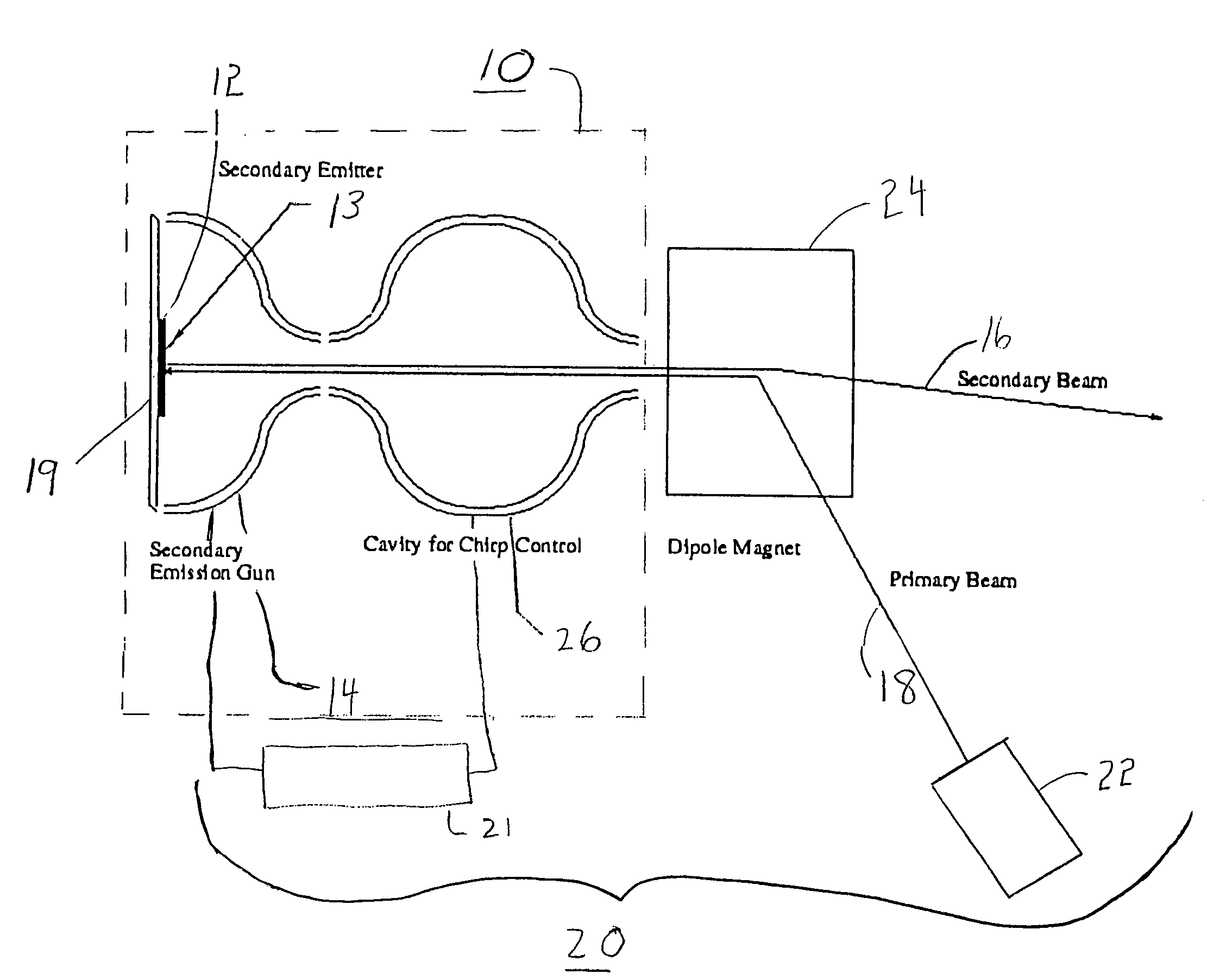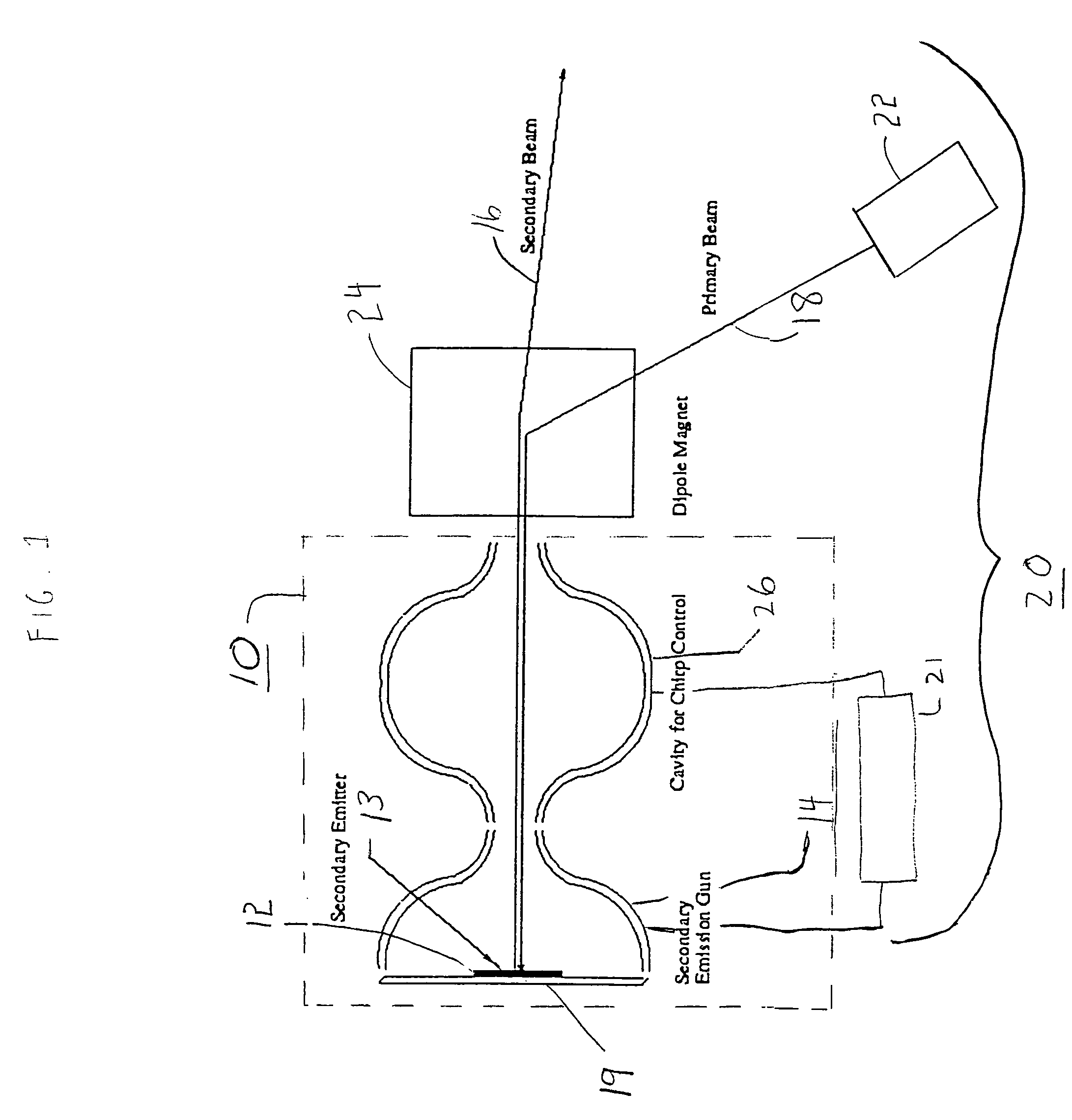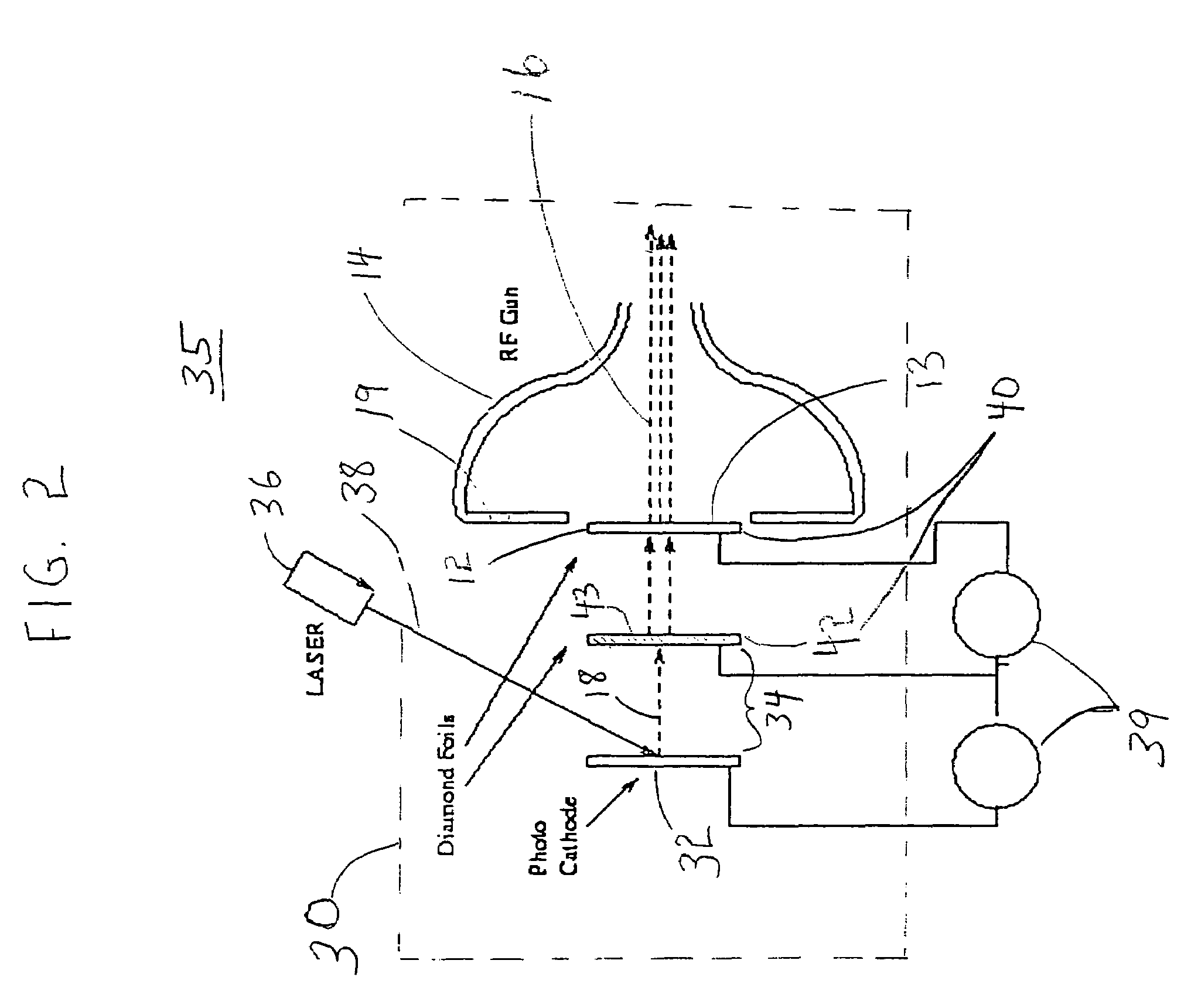Secondary emission electron gun using external primaries
a second-emission electron and primary technology, applied in the field of electron guns, can solve the problems of inability to provide short pulses, and inability to develop high average-current high-brightness electron beams, etc., and achieve high quantum efficiency and reliable and efficient effects
- Summary
- Abstract
- Description
- Claims
- Application Information
AI Technical Summary
Benefits of technology
Problems solved by technology
Method used
Image
Examples
example
[0174]Various parameters of the secondary electron beam 16 generated from the diamond emitter 12 of the present invention have been calculated for the most preferred embodiment of a laser photocathode RF gun system 80 shown in FIG. 3, where the RF cavity 14 is part of a CW superconducting RF gun, preferably operating at about 703.75 MHz. These RF parameters coincide with operation of the electron gun for the Relativistic Heavy Ion Collider (RHIC) electron cooler at Brookhaven National Laboratory, Upton, N.Y.
[0175]The source of the primary electrons 72 is assumed to be a photocathode illuminated by a laser pulse with only a single stage (pure diamond) secondary emission enhanced photocathode 70, as shown in FIG. 3 and FIG. 4a and FIG. 4b.
[0176]The thermal drift of electrons in gold, which is used to conduct a replenishing current to the diamond, is well known and is actually a very monotonic and slow function of the applied field. The thermal drift velocity at room temperature is kn...
PUM
 Login to View More
Login to View More Abstract
Description
Claims
Application Information
 Login to View More
Login to View More - R&D
- Intellectual Property
- Life Sciences
- Materials
- Tech Scout
- Unparalleled Data Quality
- Higher Quality Content
- 60% Fewer Hallucinations
Browse by: Latest US Patents, China's latest patents, Technical Efficacy Thesaurus, Application Domain, Technology Topic, Popular Technical Reports.
© 2025 PatSnap. All rights reserved.Legal|Privacy policy|Modern Slavery Act Transparency Statement|Sitemap|About US| Contact US: help@patsnap.com



